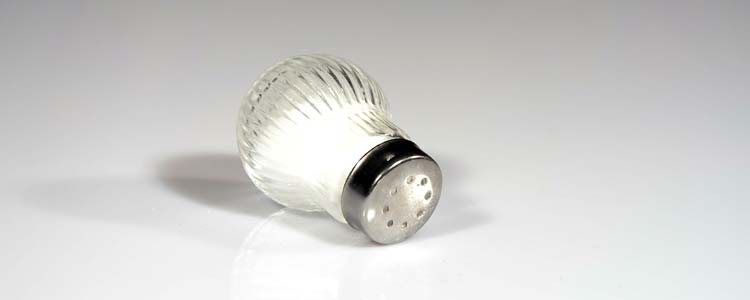 Americans have nearly twice as much salt in their diets than the daily recommendation requires. Elevated amounts of salt in the body can lead to high blood pressure and problems like kidney and heart disease. Studies done by the non-profit RAND Corporation suggests that reducing salt consumption to 2,300 milligrams a day may lead to 11 million fewer instances of hypertension yearly. Every year that may conserve around $18 billion in healthcare costs!
Americans have nearly twice as much salt in their diets than the daily recommendation requires. Elevated amounts of salt in the body can lead to high blood pressure and problems like kidney and heart disease. Studies done by the non-profit RAND Corporation suggests that reducing salt consumption to 2,300 milligrams a day may lead to 11 million fewer instances of hypertension yearly. Every year that may conserve around $18 billion in healthcare costs!
These savings to the healthcare system are fairly large, but they are easily surpassed by the quality-of-life improvements that would be made.
One early hint of excessive sodium consumption is fluid retention, which stresses the cardiovascular system as well as the heart, all while causing edema (or swelling of tissues). Some women even acquire as much as around ten to fifteen lbs, entirely of water, when its their time of the month. Fluid retention may lead to 2 other signs associated with excessive salt consumption: migraines and headaches.
Getting Salt Properly
Eliminating salt from the diet needs one fundamental method: Eat more organic foods (fresh produce, legumes, eggs, meats and lean poultry, unsalted nuts and seeds, and whole grains). Iodine is crucial for the thyroid gland to operate accurately, and many of the sea-based vegetables have it in ample supply.
The everyday salt most people use features anti-caking agents and other materials, like aluminum, which aren’t advantageous to one’s health. By comparison, unrefined rock salt, a salt extracted from ancient sea beds, features natural iodine along with a full complement of critical trace minerals.
Salt from Processed Foods
Around 90% of the salt within the American diet comes from processed foods, which makes it crucial that you read labels on bundles carefully. Focus on the daily value amounts of sodium, and avoid purchasing foods which are comprised of over 16% of that.
Make sure that you also understand the significance of “sodium free” and related statements. “Sodium-free” indicates that the food contains less than 5 milligrams of sodium per serving. “Very low-sodium” means a food has less than 35 milligrams per serving. “Low sodium” means a food comprises 140 milligrams or less per serving.
You most likely get 5% of your own daily salt consumption from your shaker or salt grinder. Consider switching to unrefined rock salt or sesame salt.
Sesame seeds are a great supply of minerals (potassium, magnesium, and calcium) that counteract the effects of an excessive amount of sodium within one’s dietary plan. In case you can’t get enough potassium in your daily diet from veggies and fruits, you should think about a potassium supplement.
While commercial salt substitutes made out of potassium chloride may seem like a great idea, I wouldn’t use them. The potassium they furnish is abnormal, therefore the body doesn’t use it nicely. In big quantities, potassium salts may cause nausea, diarrhea, vomiting, and ulcers. Additionally, they distort the natural taste of foods, including a bitter taste.
The great news is that for many folks, it’s much simpler to decrease salt than it is to decrease fat or sugar. Make sure you don’t do it all at once, though. The reason for this is that it is a piece of the liquid between our cells, and thus instrumental when it comes to the health of every cell within the human body. Along with sodium’s associate, potassium, both of these minerals balance the nutrient and waste of every cell.
